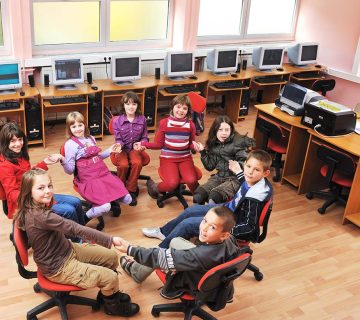In the formative years between seven and twelve, girls undergo significant developmental changes, both cognitively and emotionally. During this period, educational approaches can have transformative effects on their learning trajectories and personal growth. One such approach gaining global recognition is play-based learning. Play-based learning, once considered primarily for preschool and kindergarten settings, is now being integrated into elementary education frameworks for older children, including girls in the 7-12 age range. This paradigm shift stems from extensive research in developmental psychology, neuroscience, and education that underscores the role of play in fostering creativity, critical thinking, and social skills.
Play-based learning encompasses a spectrum of activities, from open-ended free play to structured, guided play. Open-ended play allows children to explore materials and scenarios based on their curiosities and interests. Structured play, on the other hand, is intentionally designed by educators to achieve specific learning outcomes, such as problem-solving, collaboration, and concept reinforcement.
For girls aged 7-12, structured play scenarios may include building engineering models, role-playing historical events, or engaging in interactive digital simulations. These activities align with state and national academic standards, while simultaneously offering opportunities for self-directed discovery.
Section 1: Theoretical Foundations of Play-Based Learning
Numerous theories support the integration of play into elementary education. Jean Piaget’s constructivist theory posits that children construct knowledge through interactions with their environment. Lev Vygotsky’s socio-cultural theory elaborates on the concept of the Zone of Proximal Development (ZPD), suggesting that guided activities within a child’s ZPD can accelerate learning. For girls in the 7-12 age bracket, complex play scenarios—such as collaborative science experiments or dramatic reenactments—serve as scaffolding mechanisms that elevate cognitive engagement. When female students work together to solve puzzles or reenact pivotal events, they develop critical analytical skills while reinforcing social bonds.
Neuroscientific research has also highlighted that play triggers the release of dopamine and endorphins in the brain, which enhance motivation and retention of information. For girls at this developmental stage, positive reinforcement through playful achievements can strengthen neural pathways related to executive function, memory, and language skills.
Section 2: Practical Applications in Classrooms Worldwide
In Finland, recognized for its robust educational system, elementary classrooms incorporate “learning corners” stocked with physical manipulatives, from building bricks to science kits. For girls aged 7-12, these corners become dedicated spaces for hands-on exploration. Students gather in small groups, rotate through stations, and engage in open-ended challenges such as constructing functional bridges out of craft materials. Educators facilitate discussion, prompting reflections on the scientific principles at play, such as tension and compression.
In Canada, some schools have introduced “innovation labs” where girls collaborate with peers on interdisciplinary projects. For instance, a unit on environmental science may involve role-playing as ecologists, testing water samples, and designing mock conservation plans. The lab environment encourages risk-taking, as girls iterate on their prototypes without fear of failure. The underlying philosophy is that by embedding real-world contexts into play, students develop both content knowledge and critical 21st-century skills.
The Reggio Emilia approach, originating in Italy but adopted globally, emphasizes child-led projects and documentation of learning through photographs, videos, and portfolios. Elementary-level adaptations of this approach involve older children selecting topics of interest—such as space exploration or ancient civilizations—and designing hands-on exhibits. Girls aged 7-12 often choose themes that resonate with them, such as women in science or environmental stewardship. By presenting their findings to classmates, they refine communication skills and cultivate self-confidence.
Section 3: Benefits Specific to Girls Aged 7-12
Research indicates that girls, in particular, benefit from collaborative and narrative-driven play activities. At this age, girls develop advanced language and literacy skills, making them ideal candidates for storytelling-based projects. For example, language arts units that integrate role-play can enhance reading comprehension and verbal fluency. When girls script dialogues for historical figures or create narrative-based science experiments, they solidify conceptual understanding through contextualized language.
Furthermore, female students often exhibit strong empathetic tendencies, which can be harnessed through cooperative play. In group scenarios where girls must negotiate roles, resolve conflicts, and share resources, they practice essential social-emotional skills. These include active listening, perspective-taking, and collaborative problem-solving. By reinforcing these competencies early on, educators prepare girls to navigate complex social dynamics in adolescence and beyond.
Section 4: Challenges and Considerations
While the merits of play-based learning are well-documented, successful implementation requires intentional design. Teachers must balance curricular mandates with play activities, ensuring that learning objectives are met. For girls with different learning styles—such as those who are more introverted or have sensory sensitivities—play-based activities should be differentiated. This may involve offering quieter workstations or sensory-friendly materials.
Additionally, cultural contexts influence perceptions of play. In some regions, play may be relegated to recess or extracurriculars, rather than integrated into academic instruction. Professional development for teachers is crucial, as educators need guidance on crafting developmentally appropriate play scenarios aligned with learning standards. Collaboration with parents is also essential; families should be informed about the educational value of play-based methods.
Section 5: Recommendations for Educators and Parents
To foster effective play-based learning for girls aged 7-12, stakeholders can adopt the following strategies:
– Provide a variety of materials: From building blocks to art supplies, diverse manipulatives ignite creativity.
– Design thematic units: Anchor play activities to interdisciplinary themes such as sustainability or local history.
– Facilitate reflection: Encourage girls to document their play experiences through journals, drawings, or digital portfolios.
– Encourage peer collaboration: Implement small group rotations that promote shared decision-making and equitable participation.
– Integrate technology mindfully: Use educational apps and interactive simulations that complement hands-on play, rather than replace it.
– Communicate with families: Host workshops to help parents understand the role of play in academic and socio-emotional development.







